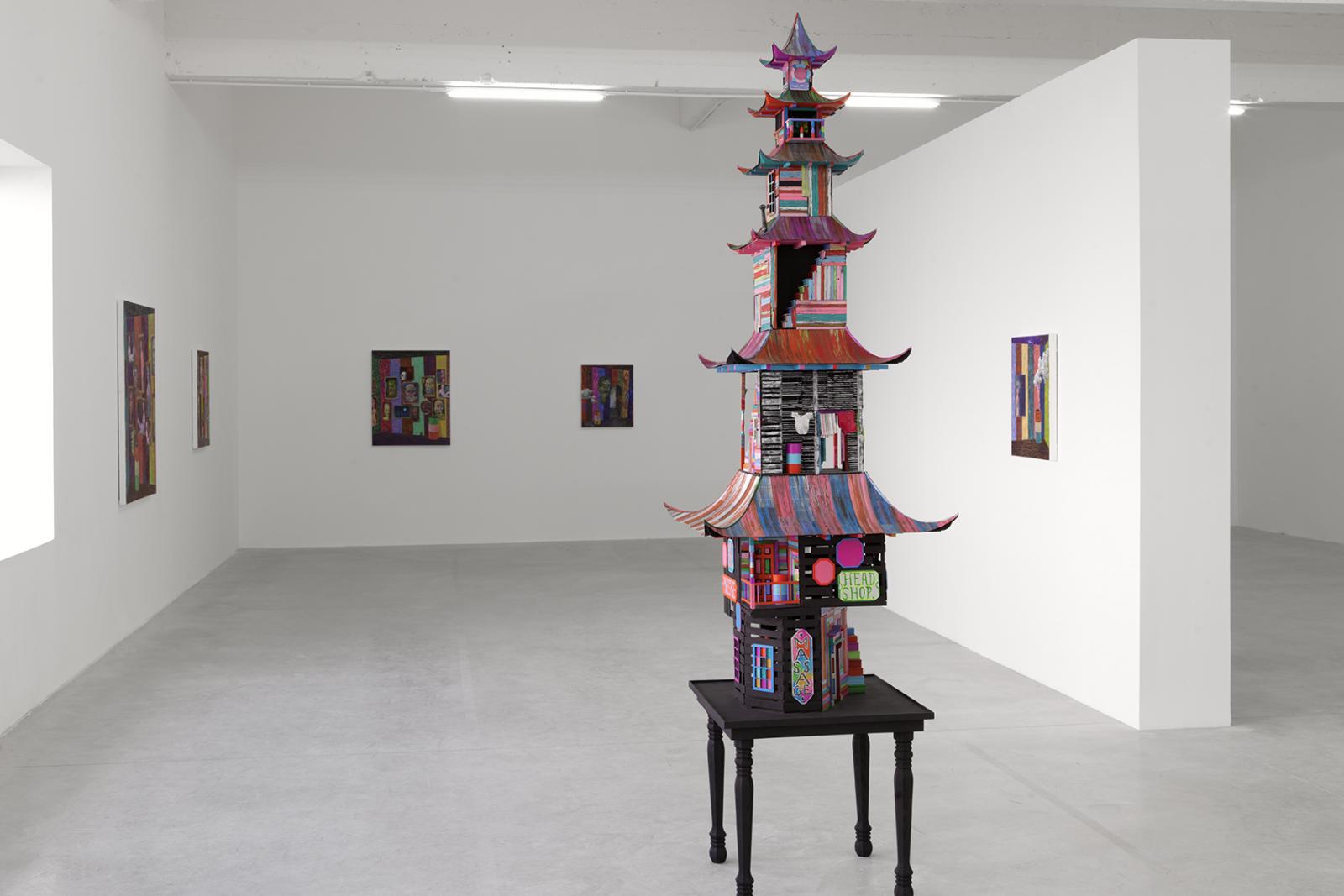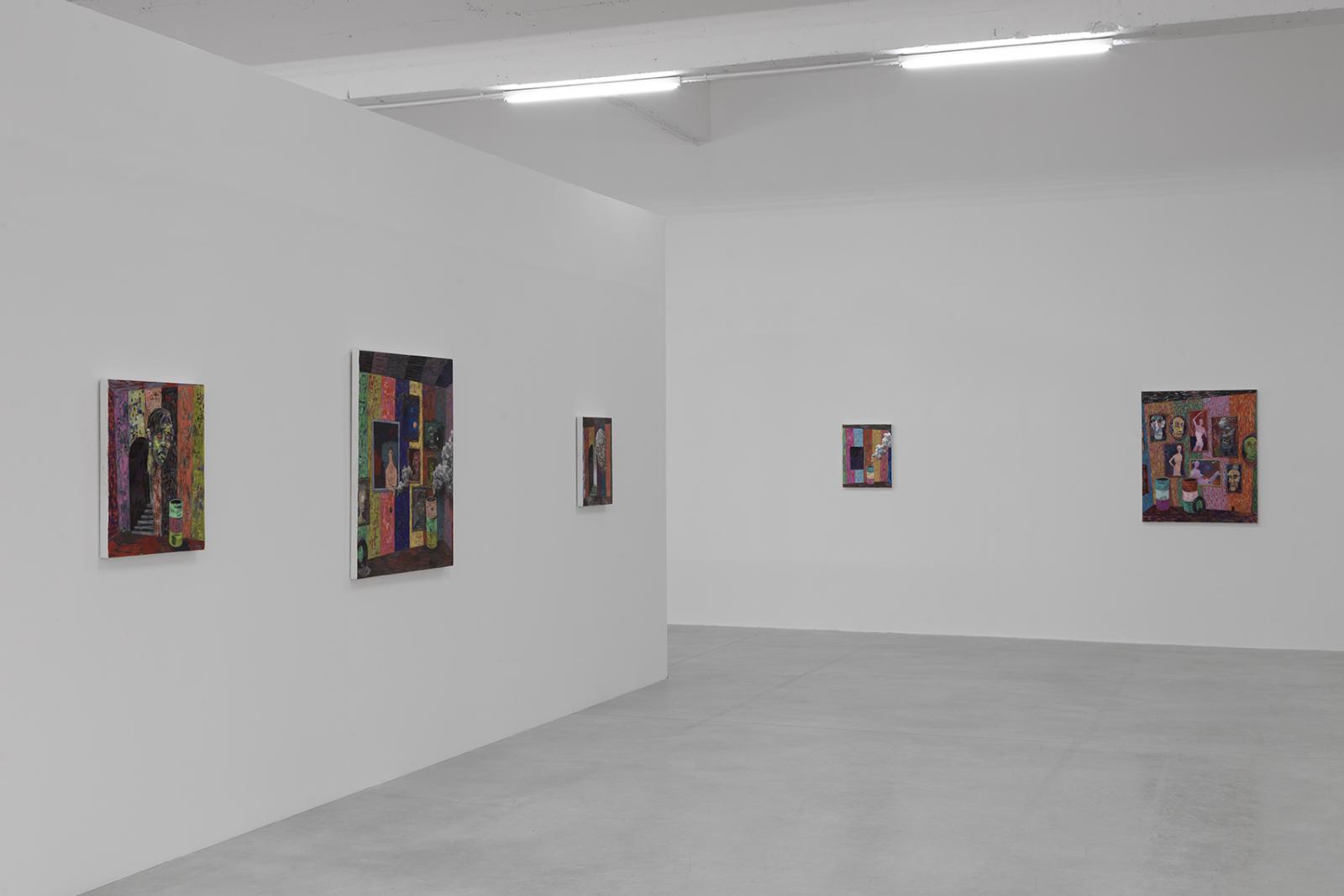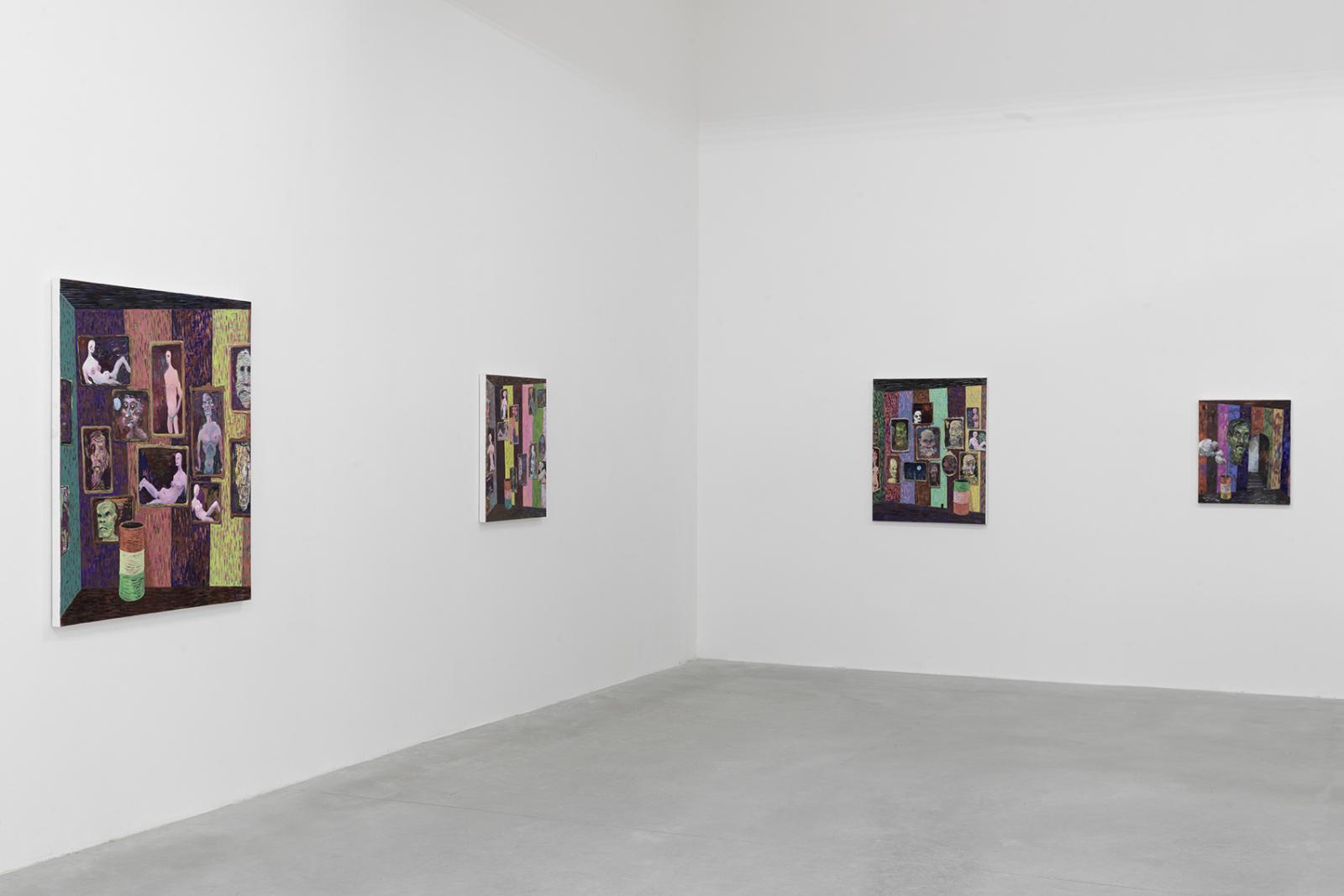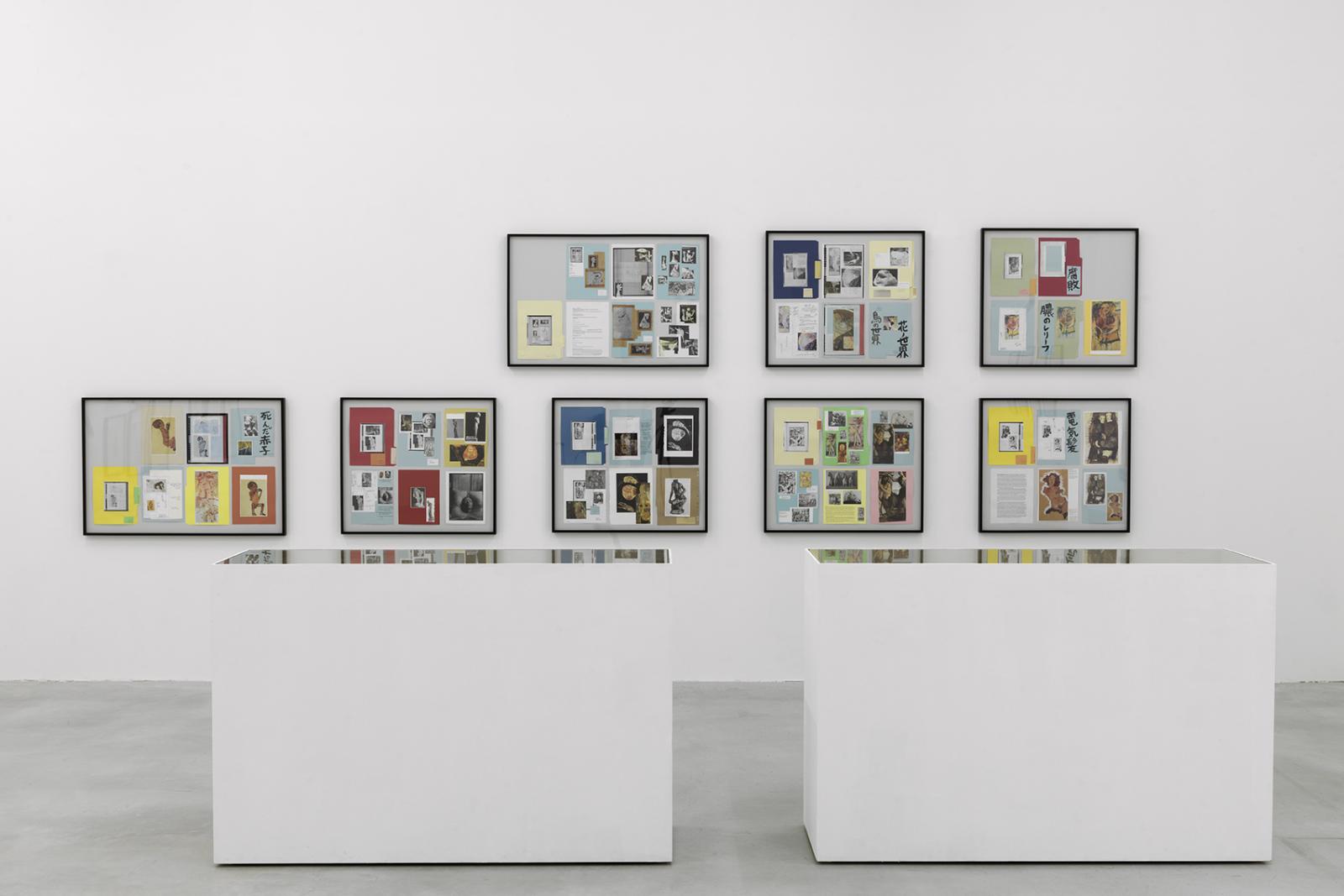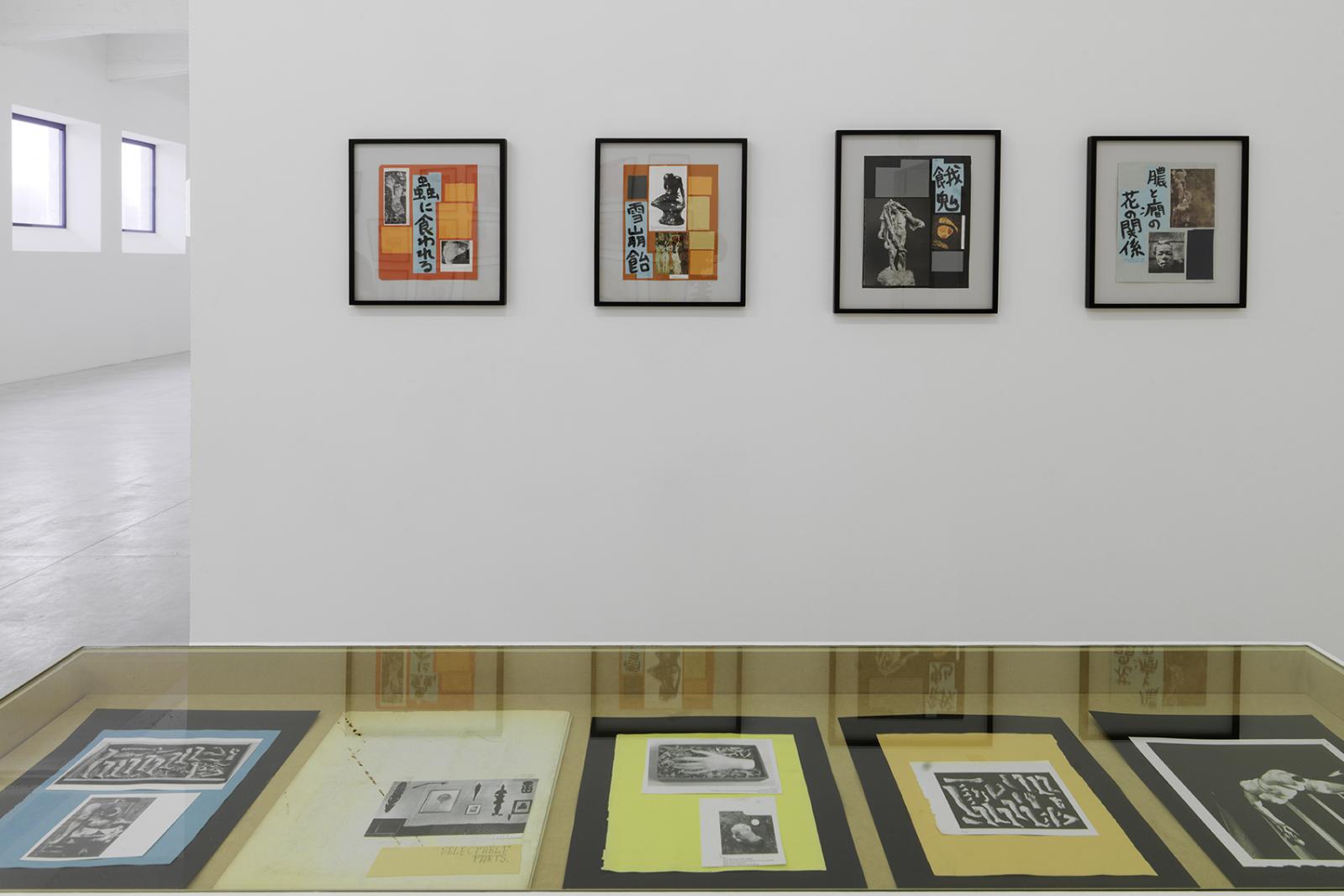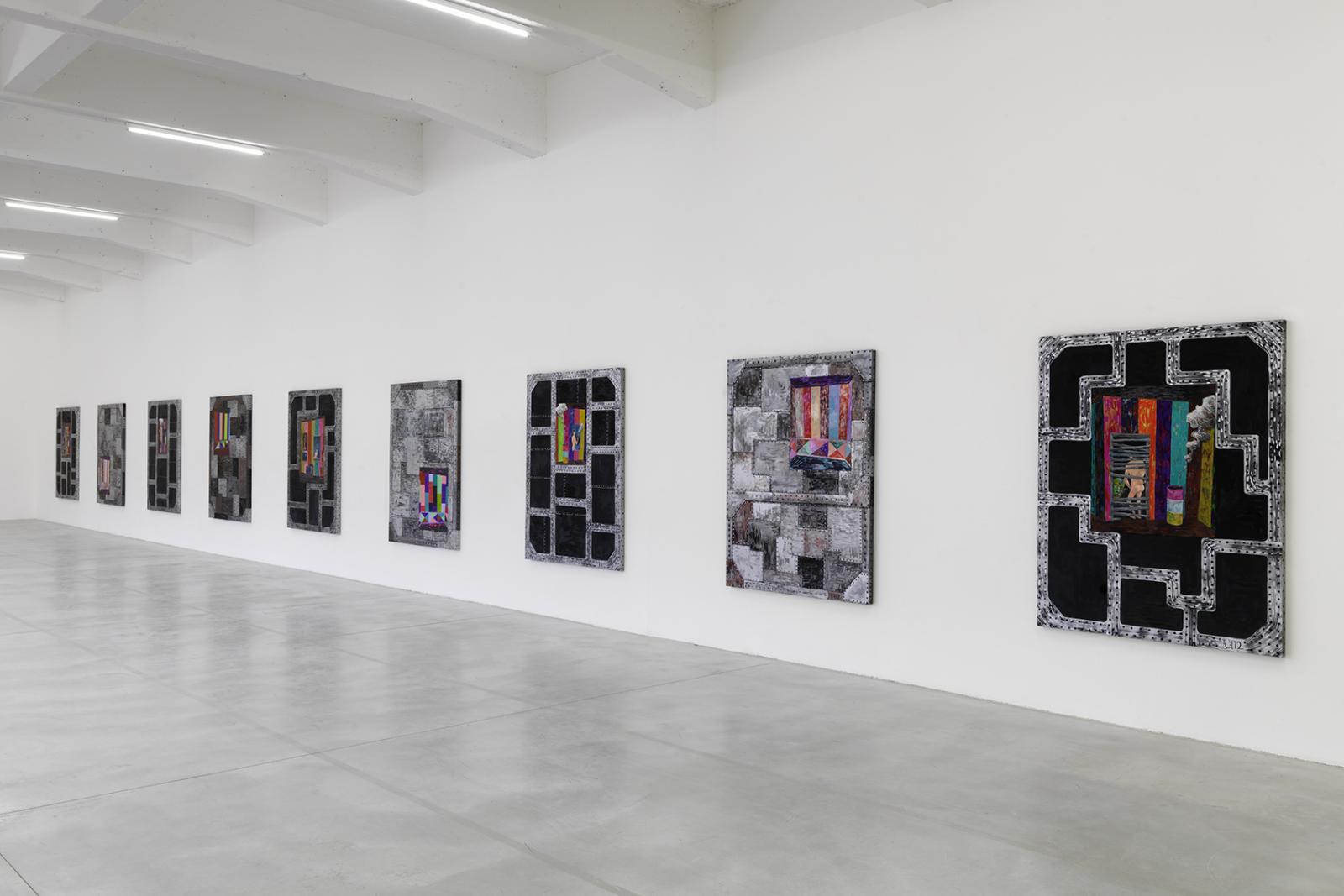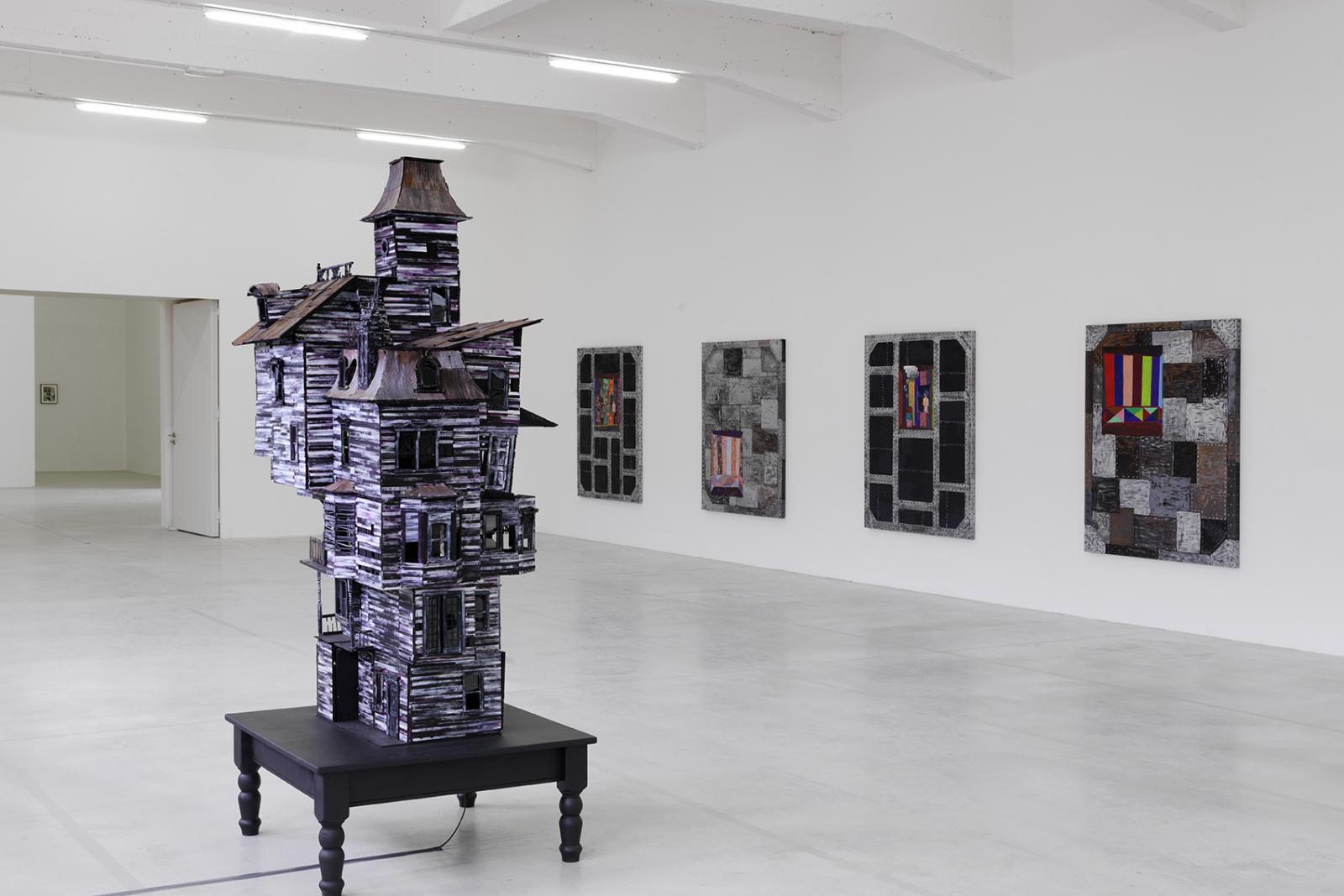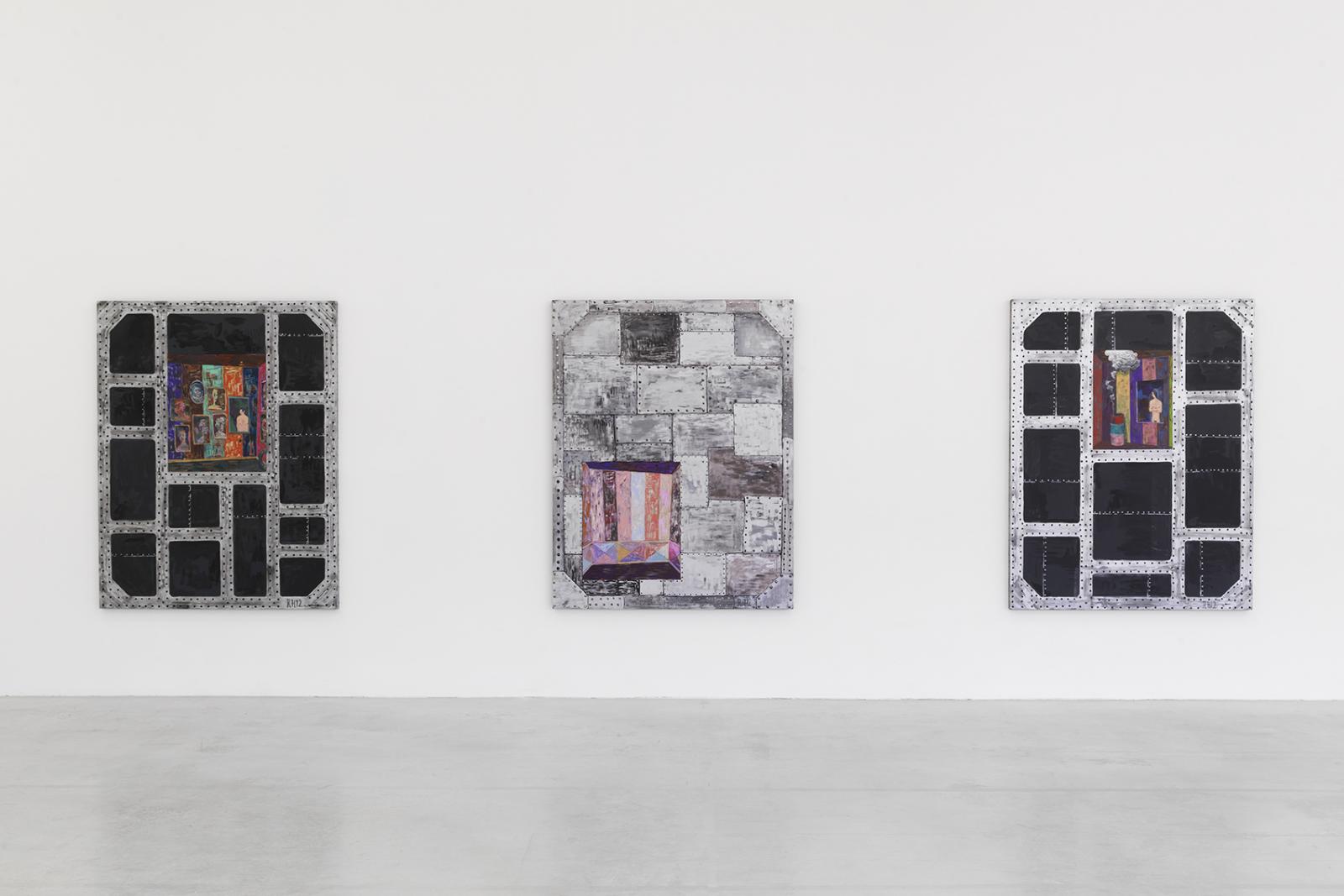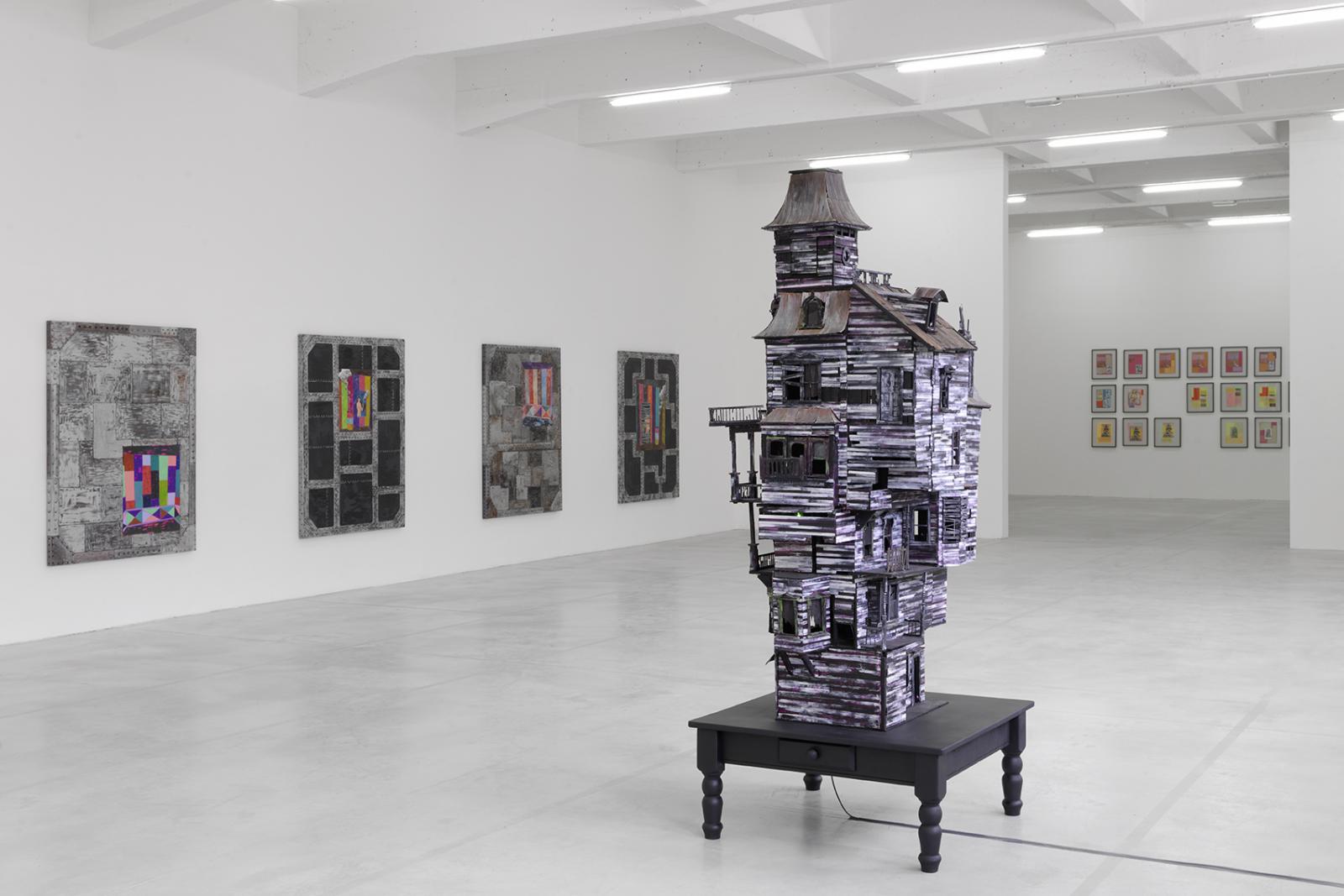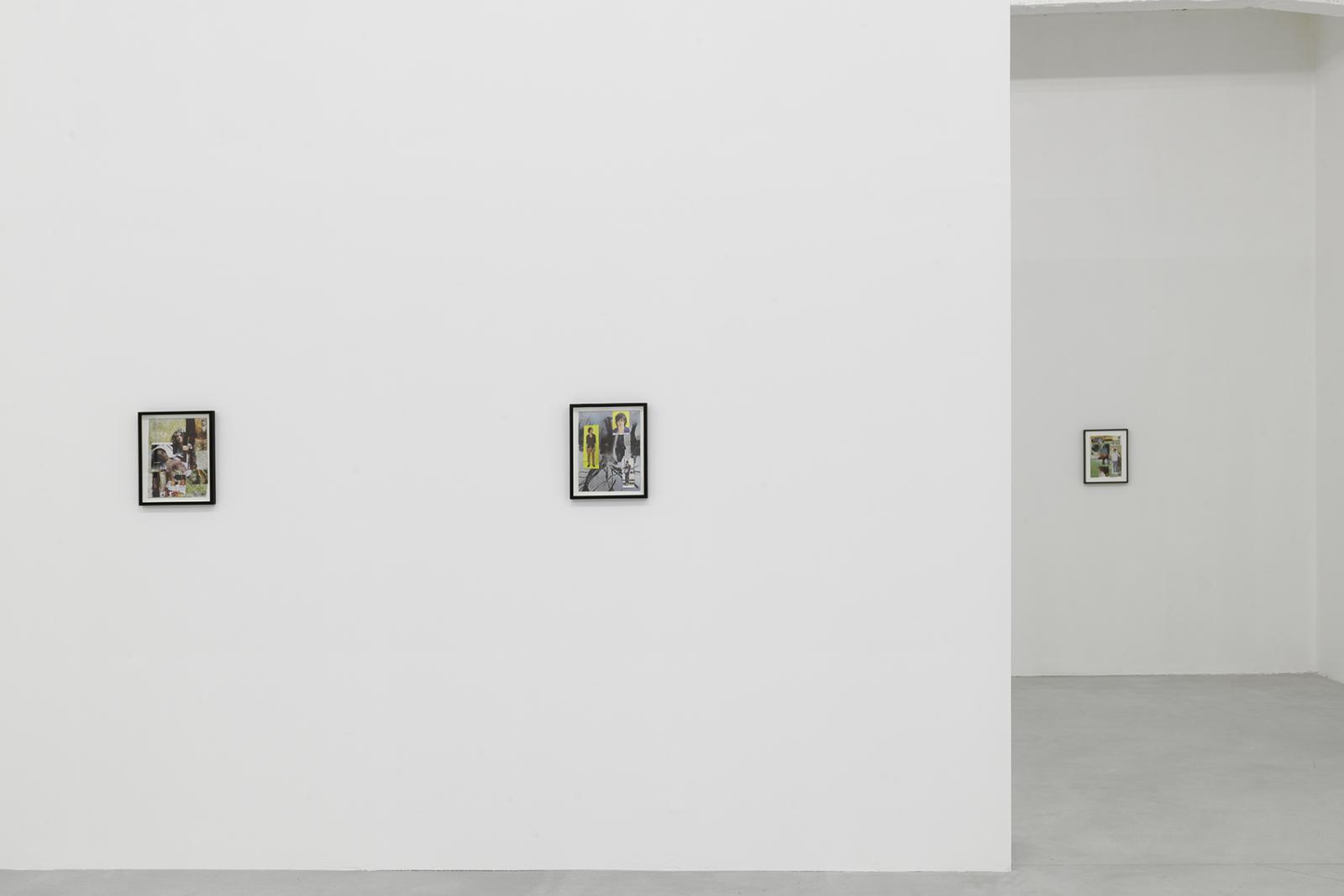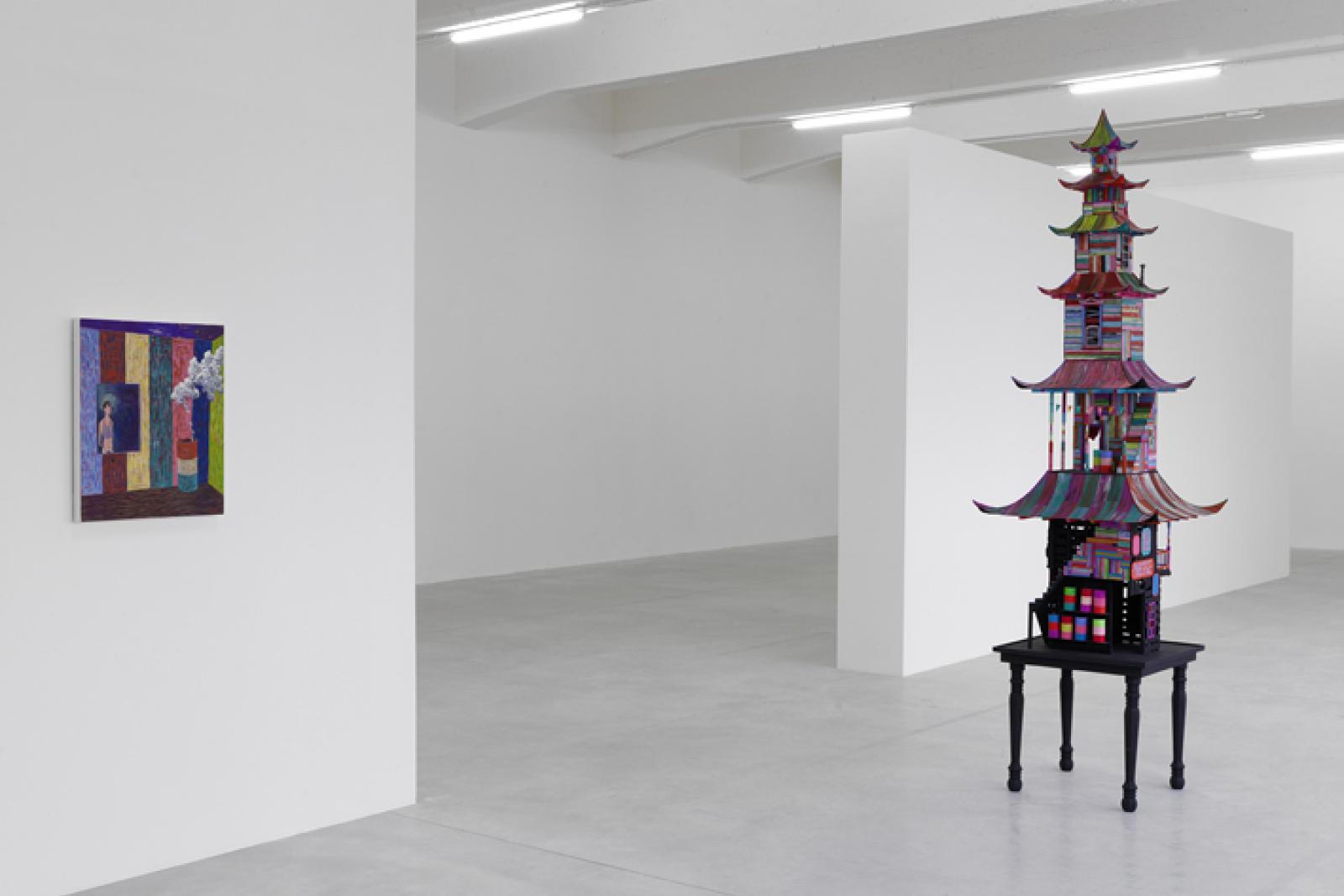Richard Hawkins
Glimmer
This first survey of the American artist Richard Hawkins in France is a unique occasion to discover a corpus of artworks both complex and sophisticated, a strange homosexual universe made of distortions, cuttings, dissections, decapitations ... and painterly epiphanies.
Since the beginning of the 90’s, Hawkins has developed a collage practice inherited from the cut-up legacy of Brion Gysin which aggressively mined the collapsed myths of American counter-culture. For Hawkins, collage is a space for doublings and expansions, for the unrealizable, the transient, the ephemeral and the unstable. Collage, in fact, could be seen as the basis for the artist’s entire oeuvre whether they be paintings, sculptures, assemblages, books of fiction, poems, tumblr accounts saturated with vintage porn or curated shows of other artists’ works. All of Hawkins’s works are haunted by a horny voyeur, a hungry cruiser, a desiring hunter whose point of view focuses on the fantastical space of classic and contemporary mythologies, perusing fleshy magazines and galleries of old paintings as lustily as he stalks real boys on street corners.
Rather than direct links between the different narratives, practices and media in Hawkins’s work, there are only the melding continuities of similar levels of indulgence, the little joys of being fascinated and getting carried away. So the beauty of teen beat star Matt Dillon, the shadow of Lautréamont and the dislocated gesture of Butoh founder, Tatsumi Hijikata, are all approached with the same delight, grace and vulgar pleasure as are any of Hawkins’ other obsessions: Greek and Roman statuary, 19 C. French Decadent literature, Gustave Moreau’s paintings, American Indian cultural narratives, zombies, haunted houses, poststructuralist theory or the sextrade in Thailand.
The exhibition of the Consortium focuses on a corpus of artworks realized over the past three years, the most recent one being Smut Palace, a sculpture Hawkins considers to be the “ideal residence for a really really dirty old man.” Smut Palace is a 5-floor Chinese-style pagoda composed of gaily painted wood and cardboard. Though seemingly abandoned, its base bares the commercial signage of a rather ribald and bawdy past: “Massage”, “Head Shop” and “Adult Arcade”. Fully a sculpture in 3 dimensions, the viewer is drawn in to see the intricate details of its interior: rambling staircases, an after-hours cocktail bar, dirty laundry hanging on the line. But beyond the vicarious pleasures of voyeurism and a dystopian fiction of desire, this small empty theatre triggers a more formalist question on the interiority of sculpture.
The exhibition also includes one of the biggest selections ever assembled of Hawkins’s Salome Paintings, confined and corrupt interiors which may represent the daily activities of the Smut Palace sculpture. The vivid colors applied in stripes on the walls are sticky with the sweaty discharge of sexual arousal. A shirtless hustler smokes lasciviously next to a glory hole. Zombie-heads, the betrayed customers of the cruel prostitutes, float through the air – dead but still greedy and yearning, still horny. The reference to Gustave Moreau’s Salomé is obvious here but the swollen bodies strip the gothic from all its marvel and become saturated with the heady atmosphere of seedy bordellos, nocturnal cruising and all its pleasures – like Genet or Rechy or Fassbinder’s Querelle. These moist interiors are explored in the Night Gallery series of paintings as well. This time, the walls are adorned with portrait galleries of nude hunks, the wrinkled deformed faces of forefathers and mummies or recumbent odalisques of hot pink ladyboys. A tricolor trash barrel chokes out plumes of acrid smoke in the corner of the room.
The Brig and the Vault painting series reproduce steel doors wherein riveted sutures - like in a steampunk contraption or a Georges Méliès spaceship geometrically divide the wood-panel supports and small full-color paintings are inserted – or collaged - in the composition. While the Vault
paintings portray interiors monopolized by forms and colors, the Brig series returns to narrative again with lecherous scenes similar to the Night Gallery paintings. Titles vary between the simple observation (Smoke), a harsh prohibiting injunction (Not under my roof, you’re not) and the unseemly and salacious neologism (Cumpire).
The second sculpture exhibited is a haunted house belonging to the Haunted Dollhouses series initiated in 2007. Constructed over the course of several months in an additive assemblage fashion of successive details, it is an aggregation of meticulously balanced gestures verging on the obsessiveness of a bricoleur. Whereas Hawkins’s inspirations are generally affiliated to a kind of preciosity (in the multiple references to the decadent literature, to Huysmans’s symbolism or XIX century occultism), House Capriccio is more of a churning, blossoming and celebratory evocation of gothic trappings, a capriccio in every Guardi and Canaletto-inspired sense of the term.
Presented for the first time at the Whitney Biennale in 2012, the collage series Ankoku takes its inspiration from the writings and scrapbooks of Tatsumi Hijikata housed in the KUAC Archives in Tokyo. Though the Ankoku project begins as a relatively faithful transcription and translation of the Japanese choreographer and innovator’s original collages of Dubuffet, Francis Bacon and Picasso’s Guernica cut from art magazines, the process quickly turns from research to inspiration, elaboration and expansion and the paralogical. These collages might indeed serve as a metaphor for Hawkins’s practice as a whole: what begins as a fascination (for other art, for role models, for the gotho-erotic, for unprocessed cultural detritus, for handsome youths) soon descends into the bathos of a culture’s dark sensuous underbelly where little flickers of celebratory light – glimmers of it – glisten and pulse and are mined and brought forth like so many jewels, both esoteric and brilliant.
—Stéphanie Moisdon
Richard Hawkins (b. 1961, Mexia Texas) is an artist and writer living in Los Angeles.
His first book of fiction, Fragile Little Flowers, was released by Les Presses du Réel in Fall 2013. In November 2013, he will premiere the exhibition Bob Mizer & Tom of Finland (co-curated with Bennett Simpson) at the Museum of Contemporary Art, Los Angeles and in Spring 2013 his Hijikata-inspired Ankoku collages will be presented in a solo exhibition at Tate Liverpool.
His research on the Los Angeles painter Tony Greene is ongoing and can be found at: http://grainofhisskin.tumblr.com/. In 2012 he was a Berlin Prize Fellow at the American Academy,
